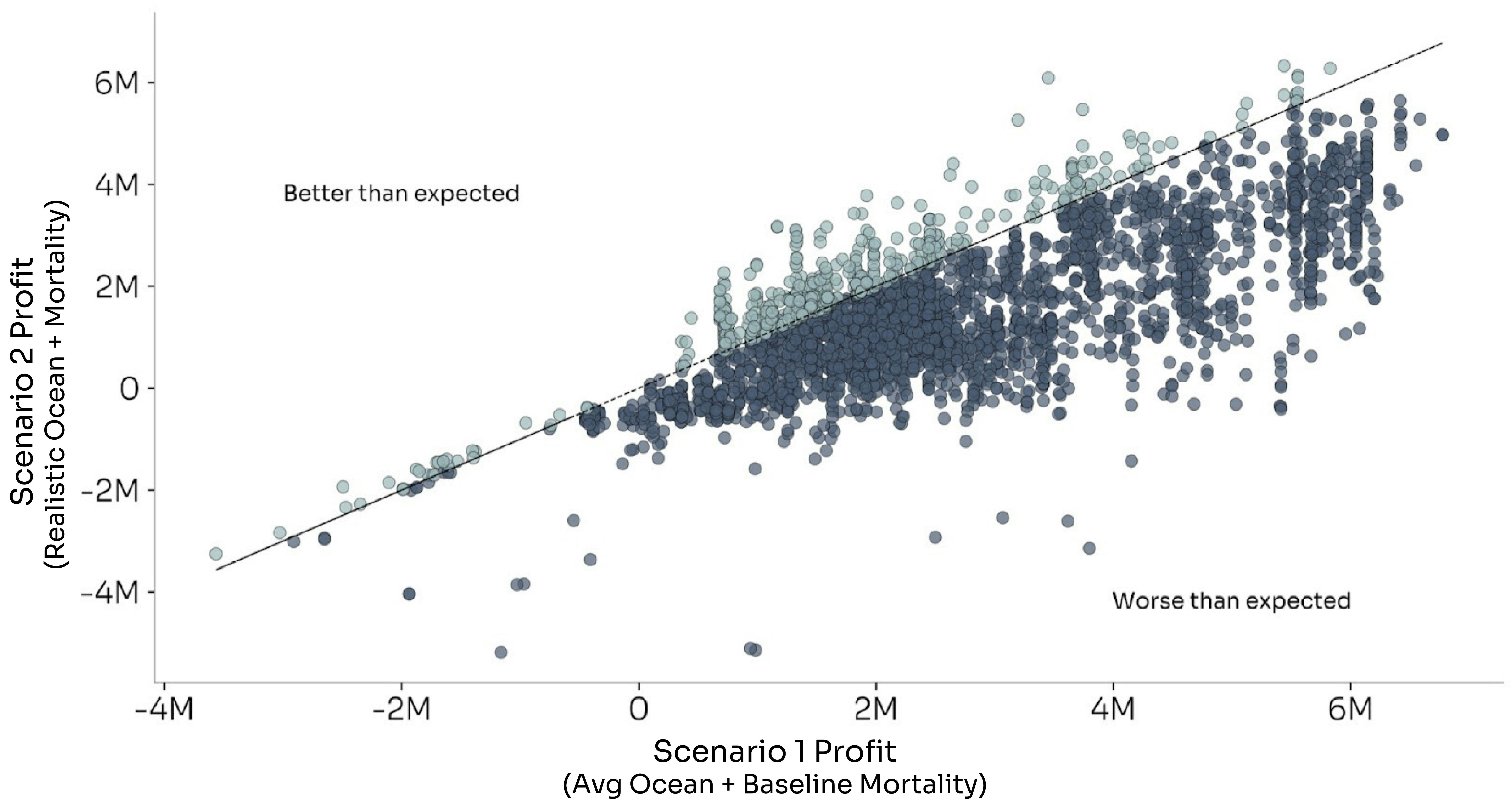When Average Doesn’t Get You a Passing Grade
In a changing ocean, extreme events are increasing in both frequency and intensity. This means that ocean conditions at fish farms may be more volatile, affecting fish growth rates and the number of significant mortality events.
With this in mind, we set out to quantify how changing ocean conditions and fish mortality are affecting the profitability of salmon farms. We addressed this using Scoot’s SeaVest model, which assesses the risk, return, and impact of individual farm sites across the entire global salmon industry (3500+ sites). We ran SeaVest to look at the industry-wide financials under two scenarios:
Scenario 1) Using climatological average ocean temperature and oxygen (i.e. monthly average conditions at each farm site) and baseline mortality (average values from the Canadian government).
Scenario 2) Using actual historic ocean data and Scoot’s global mortality database (a robust record of mortality events compiled by assigning daily cohort survival to each farm site based on published catastrophic loss events in seafood trade press and regulatory reporting).
Here’s what we found (each dot in the figure below represents a single farm site):

A whopping 85% of sites are below the 1:1 line, meaning that between 2010-2019 their average performance was worse in the more realistic Scenario 2 compared to the baseline conditions in Scenario 1. This means that investors anchoring return expectations on average conditions are likely to be pretty disappointed by actual performance. But a select number (15%) of sites actually performed better than expected.
The take home message is simple: don’t base your investment decisions on aggregate regional estimates of ocean risk. Farmed salmon offers an extraordinary investment opportunity, in a sector where better sustainability means higher profit. But it’s critical to call on core oceanographic expertise and domain intelligence to make an informed investment decision.
Interested in learning more? You can find a more detailed explanation on how the ocean impacts fish welfare and profitability at a salmon farm in our report Green Sharpe: Making Oceans Investable.